Introduction
Fishing for bass is a popular sport that many anglers enjoy all over the world. Topwater frog fishing for bass is a technique that has become increasingly popular in recent years. This technique is very effective, and it can be a lot of fun too. In this article, we will provide you with a comprehensive guide to topwater frog fishing for bass. We will cover everything you need to know to get started, including the best gear, how to choose the right frog bait, and the most effective techniques for catching bass with a frog bait.
Benefits of Topwater Frog Fishing for Bass
Topwater frog fishing for bass has become so popular among anglers because it is extremely effective. When done correctly, this technique can produce big catches of bass. There are several reasons why topwater frog fishing is so effective.
Firstly, bass are attracted to the sounds and movements of a frog in the water. This is because frogs are a natural prey for bass, so they are programmed to respond to the sight and sound of frogs in the water.
Secondly, frog baits are designed to mimic the appearance and movement of real frogs. This makes them very realistic and convincing to bass, which can increase your chances of getting a strike.
Finally, topwater frog fishing can be a lot of fun for anglers. Watching a bass attack your frog bait on the surface of the water is an exhilarating experience that many anglers enjoy.
Preparing for Your Topwater Frog Fishing Trip
Before you head out on your topwater frog fishing trip, there are several things you’ll need to consider.
Why Fishing A Frog Catches Bigger Bass
One of the main reasons why frog fishing is good for catching bigger bass is the lure presentation. By using a soft plastic frog, the angler is mimicking one of the primary food sources of bass – frogs. Frogs are abundant in most bodies of water and are a significant source of protein for bass. Bass are extremely opportunistic feeders and will target anything that resembles a frog, especially during the summer when frogs are active.
The soft plastic frog lure is designed to sit on top of the water and mimic a real frog by kicking its legs and making a splashing sound as it is retrieved. The ability to mimic the action and sound of a real frog is why the technique is so effective. When the bass sees the frog floating on the surface, it triggers a natural feeding response, causing the bass to strike the lure. The strike is often explosive, as the bass is trying to catch a quick-moving target.
Another reason why frog fishing is good for catching bigger bass is the cover it provides. Because frogs typically reside in thick vegetation, fishing with a frog lure in those areas will often allow anglers to get into hard-to-reach areas where big bass are likely to be hiding. The lure is designed to float on the surface, allowing anglers to fish in shallow water and close to the vegetation without getting snagged. This means the angler can get the lure in front of the big bass without spooking it. The fish will be less likely to see the boat, too, since the lures can be cast away from the boat.
Because the lure is designed to mimic a big meal, it is more likely to attract larger fish. Big bass often feed on frogs, so using this technique can result in catching bigger, trophy-sized fish. It’s essential to have the right gear when targeting big bass, to ensure that you can handle the fight. Bigger bass can weigh over ten pounds, so it’s crucial to have the right fishing rod, reel, and line that can handle the load.
Frogging Tricks That Catch Big Bass
Frog Fishing To Catch More Fish
Frog fishing can also increase your chance of catching more fish. By using a lure that mimics a frog’s movement, you’re likely to trigger a feeding frenzy among the bass in the area. Other fish in the vicinity may also try to attack the lure, even if they’re not predators like the bass. As a result, you may catch multiple fish on the same lure, especially if you’re fishing in a school of fish. This is why frog fishing is often used in fishing tournaments, where multiple catches are often required to win.
In conclusion, frog fishing is a highly effective technique for catching bigger bass. By mimicking a frog’s movement and sound, anglers are more likely to trigger a feeding response in big bass, even in thick vegetation where they are often found. Fishermen have been using this technique for years because of its success rate, and it’s a great way for anglers to improve their catch rates. With the right gear and a little bit of patience, anyone can successfully fish with a frog lure and enjoy the fight of their life when a big bass takes the bait.
Gear
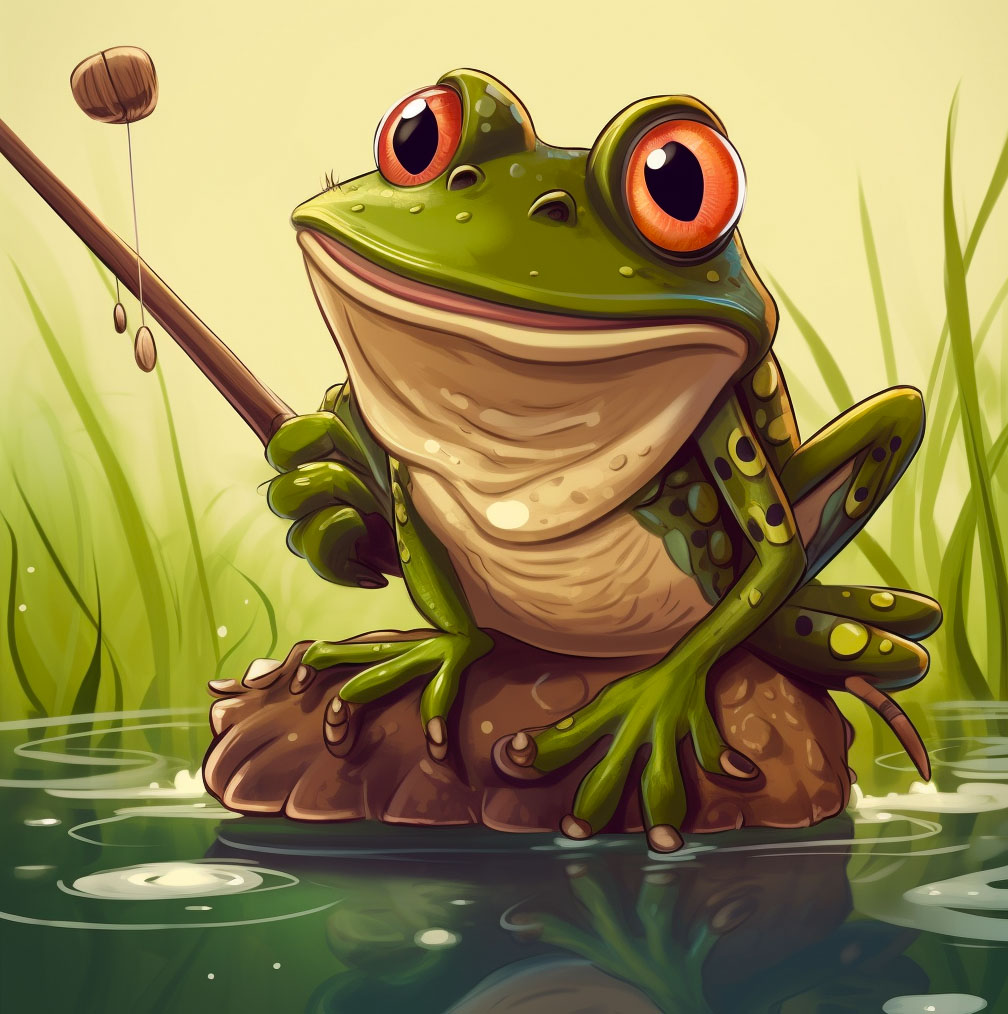
The right gear is essential for a successful topwater frog fishing trip. Here are some of the things you’ll need:
Rod and Reel
Fishing with a topwater frog can be an incredibly exciting experience, as these lures are designed to mimic real frogs and attract fish to the surface. But choosing the right rod and reel for this type of fishing is essential if you want to catch as many fish as possible.
When it comes to selecting the best rod for topwater frog fishing, there are a few things to consider. The first is the length of the rod. In general, a longer rod is better for this type of fishing because it provides better casting distance and accuracy. A rod in the seven to 7′ 6″ is ideal for topwater frog fishing.
Another important factor to consider when selecting a rod for topwater frog fishing is the power of the rod. You want a rod that has enough backbone to set the hook and control the fish, but not so much power that it makes it difficult to feel the fish bite. A medium-heavy to heavy power rod is recommended for topwater frog fishing.
Finally, the action of the rod is also an important consideration. Topwater frog fishing requires a rod with a moderate fast to fast action, as this allows you to make quick, accurate casts and gives you the sensitivity you need to feel the fish strike.
In terms of reels, there are a few different options available. The most popular type of reel for topwater frog fishing is a baitcasting reel. Baitcasting reels provide a lot of casting control, accuracy, and power. They also have a higher gear ratio, which makes it easier to retrieve the lure quickly and keep up with fast-moving fish.
When selecting a baitcasting reel for topwater frog fishing, look for a reel with a high gear ratio of around 7:1 or higher. This will give you the speed you need to retrieve the lure quickly and keep up with fast-moving fish. You also want a reel with a smooth drag system, as this will help you control the fish once you have hooked it.
Another option for topwater frog fishing is a spinning reel. Spinning reels also provide good casting distance and accuracy, and they are generally easier to use for beginners. However, they do not provide as much power or control as baitcasting reels, so they may not be the best option for larger fish.
If you do decide to go with a spinning reel for topwater frog fishing, look for a high-speed reel with a gear ratio of around 6:1 or higher. This will give you the speed you need to retrieve the lure quickly and keep up with fast-moving fish. You also want a reel with a smooth drag system, as this will help you control the fish once you have hooked it.
Specific Rod Recommendations
- Dobyns Fury FR 735C – This rod is a premium quality, 7’3″ medium-heavy power, fast action rod designed to cast and retrieve frogs with ease. It’s an excellent option to use for frog fishing for bass, thanks to its lightweight and sensitive design.
- St. Croix Bass X Casting Rods – This brand offers a wide variety of casting rods that cater to different anglers’ distinct needs. Their popular model, the BC76MF, is a 7’6″ medium-heavy rod with a fast action that’s perfect for frogging.
- G. Loomis E6X Casting Rod – The G. Loomis E6X is another popular brand with pro anglers. The 7’5″ heavy power, fast action casting rod is designed for frogging and other heavy-duty techniques.
- Abu Garcia Veritas Casting Rod – The Veritas is an affordable and highly-rated frogging rod that is perfect for beginners and advanced anglers alike. The 7’6″ heavy power, fast action rod is incredibly responsive and versatile, making it ideal for frog fishing.
- Lew’s TP-1 Fishing Rod – Lew’s TP-1 rod is a medium-heavy 7’3″ fast action rod, making it perfect for frog fishing. It’s a balance between strength and sensitivity, and its EVA split-grip handles provide long-lasting comfort, even when fishing for extended periods.
Line Selection For Topwater Frog Fishing
Fishing topwater frogs can be an exciting and effective way to catch bass. However, it is important to use the right fishing line to achieve optimal results. In this article, we will explore what fishing line to use when fishing a topwater frog.
Topwater frogs are lures that are designed to mimic the movement and appearance of a real frog on the water’s surface. They are typically made of soft plastic and have a hollow body that allows them to float. When retrieved, the legs of the frog create a splashing and kicking motion that often entices predatory fish to strike.
To effectively fish a topwater frog, anglers need to use a fishing line that can handle the lure’s weight, as well as the power of the fish they are targeting. Here are the most common types of fishing line used when fishing topwater frogs:
Braided Fishing Line
Braided fishing line is a popular choice among anglers when fishing topwater frogs. This type of line is made of multiple fibers that are woven together to create a strong and durable line. Braided fishing line is known for its sensitivity and strength, which makes it ideal for fishing topwater frogs.
- Power Pro Spectra fiber braided fishing line – This line is known for its strength and sensitivity, making it a great choice for frog fishing. It also casts well and has minimal stretch, allowing for better hook sets.
- Sufix 832 Advanced Superline – This line is designed to be durable and strong, with a high abrasion resistance that makes it ideal for fishing around weeds and other vegetation. It also has a high visibility color that makes it easy to track your line while fishing.
- Berkley X9 Braid Fishing Line – This line is made from 9-carrier construction, which provides excellent strength and smooth casting. The line is also designed to be highly sensitive, allowing you to feel even subtle bites from bass.
- Spiderwire Stealth Braided Fishing Line – This line is made to be tough and durable, with a smooth design that resists tangles and knots. It has a low stretch and high sensitivity, making it ideal for frog fishing in heavy cover.
- Daiwa J-Braid x4 Braided Fishing Line – This line is designed to be strong and abrasion-resistant, with a smooth surface that resists tangles and knots. It has a low diameter, making it easy to cast and offers excellent sensitivity for feeling bites.
Monofilament Fishing Line
Monofilament fishing line is another popular choice when fishing topwater frogs. This type of line is made of a single strand of nylon, which makes it less visible to fish than braided line. Monofilament line also has some stretch, which can be helpful when fighting fish, as it can help absorb shock and prevent the line from breaking.
- Berkley Trilene XT Mono Fishing Line – This line is abrasion-resistant and has low memory, which makes it ideal for casting long distances. The line comes in different test weights depending on your needs.
- Stren Original Monofilament Fishing Line – This line features excellent strength, sensitivity and abrasion resistance, giving you the confidence to cast farther and fight harder. It comes in different test weights ranging from 4 to 30 pounds, so you can use it for heavier or lighter frog fishing.
- Sufix Siege Monofilament Fishing Line – Considered as an all-around monofilament line, it is known for its strong knot strength, excellent casting performance and low stretch. The line comes in various test weights and has the option of being green or clear-colored, providing versatility in different fishing conditions.
Fluorocarbon Fishing Line
Fluorocarbon fishing line is becoming increasingly popular among anglers when fishing topwater frogs. This type of line is made of a single strand of fluoropolymer, which makes it nearly invisible to fish in the water. Fluorocarbon line also has some stretch, which can help when fighting fish.
- Seaguar AbrazX Fluorocarbon Fishing Line – This line is known for its strength and durability, making it a great choice for frog fishing. It is also abrasion-resistant, which is important when fishing in heavy cover.
- Berkley Vanish Fluorocarbon Fishing Line – This line is renowned for its invisibility in the water, which can be a game-changer when targeting bass, especially in clear water conditions. It also has good strength and castability.
- Sunline Super FC Sniper Fluorocarbon Fishing Line – This line is a favorite among tournament bass anglers. It has excellent sensitivity and strength, allowing you to detect even the slightest bite and muscle big bass out of cover.
- P-Line Tactical Fluorocarbon Fishing Line – This line has superior knot strength and low stretch, making it ideal for bass fishing with frogs. It also has a small diameter, which helps improve casting distance and accuracy.
- Yo-Zuri Hybrid Fluorocarbon/Nylon Fishing Line – This line combines the best qualities of two different materials, making it strong, sensitive, and easy to handle. It also has a unique coloration that helps keep it invisible in the water, which is crucial when frog fishing.
Hybrid Fishing Line
Hybrid fishing line is a combination of different types of fishing line. For example, some hybrid lines are made of a braided core with a fluorocarbon coating. This type of line combines the strength and sensitivity of braided line with the invisibility of fluorocarbon line.
- The Sufix 832 Advanced Superline in Hi-Vis Yellow is a solid choice for frog fishing since it has high visibility, which is important when watching the line for any sudden movements or twitches..
- The P-Line Floroclear Clear Fishing Line is a popular hybrid line that combines the best properties of both fluorocarbon and monofilament. It is invisible underwater and has low memory, making it easy to cast and retrieve your frog.
- The Berkley Trilene XL Smooth Casting Monofilament Line is another great option for frog fishing since it has a low stretch and excellent sensitivity, allowing you to feel for any bites or subtle changes in the water.
- The PowerPro Super Slick V2 Braided Line is another strong option for heavier frog presentations. It has an ultra-smooth coating that increases casting distance and reduces any line noise that might spook the fish.
Gear Conclusion
In conclusion, selecting the right rod and reel combo for topwater frog fishing is essential if you want to have success on the water. A seven to 7′ 6″ medium-heavy to heavy power rod with a moderate fast to fast action is ideal, and a high-speed baitcasting or spinning reel with a smooth drag system is recommended. Finally, consider using braided line with a high pound test rating to provide the strength and sensitivity you need to control even the largest fish. With the right gear and a bit of patience, you can enjoy a thrilling and rewarding topwater frog fishing experience on your next trip to the water.
Key Frog Fishing Setups: Be A Better Frog Fisherman!
Topwater Frog Baits
There are several types of frog baits that you can use when topwater frog fishing for bass. Here are some of the most popular types:
Hollow Body Frogs
Hollow body frogs are a popular lure among bass fishermen due to their effectiveness in attracting and catching big bass. These lures are designed to mimic the natural movement of a frog swimming on the surface of the water, and their hollow bodies make them ideal for fishing in low-lying weeds, lily pads, and other vegetation where bass tend to congregate.
Here are some of the key reasons why hollow body frogs are good for bass fishing:
- Realistic movement: Hollow body frogs are designed to move across the surface of the water in a similar way to how real frogs move. As they swim, they create ripples and vibrations in the water, which can attract the attention of bass hunting for prey. The lifelike movement of these lures can be irresistible to bass, which makes them a highly effective tool for catching these fish.
- Versatile: Hollow body frogs are versatile lures that can be used in a variety of fishing situations. They are particularly effective in areas with heavy vegetation or cover, where other lures might get snagged or tangled. These lures can be fished in open water or in the shallows, making them a go-to option for bass fishermen in many different situations.
- Weedless design: One of the key features of hollow body frogs is their weedless design, which allows them to be fished effectively in dense vegetation and weed beds. The lure’s hollow body and upturned hooks make it possible to retrieve the lure gently over the top of weeds and lily pads without getting stuck, which increases the chances of enticing a big bass to take the bait.
- Unmatched surface action: When a bass sees a hollow body frog moving across the surface of the water, it can be difficult for them to resist striking. The lure’s unique design and realistic movement create a surface action that no other bait can match.
- Mimicry: One of the reasons that hollow body frogs are so effective is that they closely resemble the natural prey that bass feed on. Bass are opportunistic feeders and will eat anything that looks like food, which makes a frog lure an ideal option for mimicking these creatures.
- Big Bass: Hollow body frogs are particularly effective in catching big bass, which are often found in thick vegetation and near the surface of the water. These fish are harder to catch with other types of lures, but the realistic movement and weedless design of hollow body frogs makes them a preferred option for catching the biggest and most elusive bass.
- Easy to use: Another advantage of hollow body frogs is that they are easy to use, even for beginner anglers. They are typically fished with a steady retrieve or with a series of short hops across the water, which makes them simple to master for anyone who is new to fishing.
In conclusion, the benefits of using hollow body frogs for bass fishing are numerous. Their realistic movement, weedless design, versatility, and ability to catch big bass make them a favorite among fishermen of all levels. Whether you are a novice or an experienced angler, a hollow body frog lure is an excellent addition to your tackle box, as it can help you catch more fish and have more success on the water.
Popping Frogs
One bait that has gained immense popularity in recent years is the popping frog.
Popping frogs are topwater lures that have a concave face that creates a popping sound when they are retrieved across the surface of the water. These lures mimic the sound and movement of a frog or other small prey that bass commonly feed on. The popping sound, along with the frog-like appearance, attracts the attention of predatory bass, making popping frogs an excellent choice for bass fishing. Here are some reasons why popping frogs are so effective in catching bass:
- Imitates Natural Prey
Bass are predatory fish by nature, and they feed on various types of prey, including frogs, lizards, and insects. Frogs, in particular, are a favorite food source for bass as these creatures can be found in ponds, lakes, rivers, and streams. Popping frogs mimic the look and movement of real frogs, making them an attractive meal for bass.
- Creates a Commotion
The popping sound created by the concave face of the frog lure creates a commotion on the surface of the water. This sound attracts predatory bass by signaling the presence of prey in the area. The commotion also creates a visual disturbance on the water, which can draw bass in for a closer look.
- Increases Visibility
Popping frogs are available in various colors, including green, brown, and white, among others. The brightly colored lures increase visibility, making them easier for bass to see in low light conditions and murky water. Furthermore, the vibration and sound of the lure help the bass hone in on the location of the bait, even in murky waters.
- Versatile
Popping frogs are versatile lures that can be used in both shallow and deep waters. They can be fished around lily pads, weed beds, and other structure that bass like to hang around. Their weedless design allows the lure to be retrieved through dense vegetation without snagging, making them an ideal choice for fishing near cover.
- Excites the Bass
The popping sound and vibration created by the lure are irresistible to bass. The sound activates their predatory instincts, causing them to strike at the bait aggressively. The excitement of the strike is a thrilling experience that every angler looks forward to.
- Great in Hot Weather
Bass fishing can be challenging during hot weather conditions, as the heat can cause bass to become lethargic and slow their feeding habits. However, popping frogs are still effective even during hot weather. The lure’s presentation and sound create an attraction that bass cannot resist, even when they are not actively feeding.
In conclusion, popping frogs are an effective bait for bass fishing due to their ability to mimic natural prey and create a commotion on the surface of the water. The lure’s versatility and weedless design make it an ideal choice for fishing near cover, and the sound and vibration of the lure are excellent at attracting predatory bass. Furthermore, the brightly colored lures increase visibility and make them easier for bass to see in murky water. So, if you are looking to catch more bass, adding a popping frog to your tackle box is an excellent choice.
Walking Frogs
Walking frogs, also known as topwater frogs, have become increasingly popular among bass fishermen in recent years. These lures mimic the movements of live frogs, which are a staple in a bass’s diet. Using a walking frog in your fishing expeditions can increase your chances of catching more bass, and here’s why:
- Versatility
Walking frogs are versatile lures that can be used in a variety of fishing scenarios. They can be fished in shallow water, around docks, in thick vegetation, and along the edges of weed lines. Walking frogs can also cover a lot of water quickly and efficiently, making them a great choice for anglers who want to explore a new fishing spot.
- Effective in attracting fish
The realistic presentation and the acoustic disturbance created by the walking frog make it an irresistible meal for bass. Walking frogs are designed to produce a side-to-side walking motion, imitating the movements of a real frog. The lure splashes and spits water as it moves, creating noise and vibrations that attract nearby fish. Fish can sense the ripples caused by the frog’s movement, making it more visible and compelling to target.
- Weedless design
Walking frogs are designed to be weedless, meaning they can be fished in areas with heavy vegetation and cover without getting stuck or tangled. The lure’s design features an inverted hook, which is hidden in the frog’s body, preventing it from snagging and improving the chances of hooking a fish.
- Increased probability of catching bigger fish
Walking frogs are known for catching larger bass, as the lure’s topwater action can often tempt more prominent fish to bite. Larger fish tend to be more cautious when it comes to eating, and the sound and action of the walking frog can trigger an aggressive reaction and prompt them to strike.
In summary, walking frogs are an excellent choice for bass fishing due to their versatility, ability to attract fish, unique topwater action, weedless design, and effectiveness in catching bigger fish. When used correctly, the walking frog can be a valuable tool for any angler hoping to up their bass fishing game.
Best Colors For Frog Baits

Although many factors come into play when choosing the right frog lure, color is one of the most important ones.
The best frog colors vary depending on different environmental factors, including water conditions, light conditions, and the type of prey present in the body of water you’re fishing in. However, certain colors have proven to be effective in most scenarios, and we’ll be discussing those in detail below.
- Green
Green is the most common frog lure color for bass fishing, and for good reasons. Most frogs found in bodies of water are green, so using a green frog lure is a natural bait that will easily attract bass. Because of the natural coloring, green frog lures work best in clear, vegetationless waters in bright conditions.
The best shade of green frog lures varies depending on the type of vegetation present. For instance, if the lake or pond has light green algae growth, a darker green frog lure will work better. On the other hand, if the body of water has dark green lily pads or hydrilla, a lighter green frog lure is more effective.
- Black
Black frog lures are versatile and work well in a variety of conditions. They’re particularly effective in low-light or cloudy conditions where they can stand out from the dark water. Because of the contrast of color, black frog lures work well in murky or stained water.
Black frog lures can also mimic other prey such as mice, snakes, and other amphibians that share a similar dark color. Fishermen often recommend using a black frog lure when fishing in heavily vegetated areas or areas with low visibility. It’s essential to note that black frog lures are best used in the early morning or late afternoon when the light is less intense.
- Brown
Brown frog lures are natural and work well in most bodies of water. They’re perfect for fishing in areas with dense vegetation or murky water. Brown frog lures work well in the shade of trees, rocks, and other obstacles during the day. They’re also great in low-light conditions because they blend in with natural surroundings.
Brown frog lures mimic the coloring of some natural prey, including toads and frogs in mud and dirt. They also resemble small mammals, making them perfect for attracting larger, predatory fish.
- Yellow
Yellow frog lures, like green ones, mimic the color of live frogs found in natural bodies of water. These lures are effective in bodies of water with a significant amount of sunlight. Yellow frog lures are also great for fishing in clear waters, where they can be easily seen by bass.
Yellow frog lures can also mimic other prey such as snakes, caterpillars, and other insects that share a similar yellow coloring.
- White
White is an unusual color for a frog, but it’s surprisingly effective as a lure. It works well in cloudy, overcast conditions, as well as in clear bodies of water. Because white frog lures can be quickly seen against any background, they’re effective for attracting predatory fish that are actively feeding.
White frog lures can also mimic other prey such as juvenile fish, crayfish, and other small aquatic animals that share a similar color.
In conclusion, choosing the right frog lure color for bass fishing is critical to a successful day on the water. Green, black, brown, yellow, and white are all great frog lure colors that can catch bass in most bodies of water. The key is to choose the right color based on the body of water’s conditions and the type of prey present. By following these tips, you’ll be sure to catch more bass on your next fishing trip!
Choosing the Right Frog for Your Fishing Location and Conditions
Once you have chosen the type of frog bait you want to use, the next step is to narrow in the bait for your fishing location and conditions.
Size: The size of your frog bait will depend on the size of the bass you are targeting. If you are targeting smaller bass, choose a smaller, lighter weight frog bait.
Color: The color of your frog bait should match the color of the water you are fishing in. If you are fishing in clear water, choose a lighter, more natural color. If you are fishing in murky or stained water, choose a darker, more vibrant color.
Type of Cover: The type of cover you are fishing in will also dictate the type of frog bait you should use. If you are fishing in heavy cover, choose a bait that is weedless, such as a hollow body frog.
Frog Bass Fishing By Season
Winter
Winter is not the best season to fish with frog lures. Cold water temperatures make the fish inactive, and they tend to stay in deeper waters with less surface action. The water is also usually clear, making it difficult to attract the fish to a frog lure.
However, some anglers have found success in using frog lures in winter, usually during a mild winter. If the winter is mild, the fish may still be shallow, and the frog lure can work. The key to successful winter frog fishing is slow retrieval. Slowly bounce the frog over the surface, allowing it to pause momentarily before continuing. This technique mimics a frog struggling in the cold water, and the lethargic bass are more likely to bite.
Prespawn
Prespawn is a great time to use frog lures. As the water temperature starts to warm up, the fish become more active and start to move to the shallows to feed. Male bass will start preparing their nests in anticipation of females to arrive for spawning. During the prespawn, bass are hungry and willing to strike at anything that is presented to them.
When using frog lures during the prespawn, focus on the weed beds, brush piles, and other structures where the bass are likely to spawn. Cast the lure on the edge of the weed bed and retrieve it slowly, pausing from time to time. The pauses will give the bass ample time to notice the lure and strike.
Spawn
The spawn is the period when bass are most vulnerable. It is also the period when the fish are most active and aggressive, ready to defend their nest against any intruders. The spawn period is an excellent time for frog fishing, and it is when some of the biggest bass are caught on frog lures.
During the spawn, look for areas with shallow water, preferably with plenty of cover. Focus on the edges of the weeds, lily pads, and other vegetations. The key is to get the frog as close to the cover as possible. Once the frog is in position, twitch it, causing it to make small movements. This movement mimics the natural movement of a frog, and the bass that are guarding their nests will be triggered to strike.
Post Spawn
After the spawn, the bass start to recover from the intense spawning activities. They tend to move to deeper waters to rest and start to feed more aggressively. Post spawn is an excellent time for frog fishing as the fish are looking to replenish their lost energy.
During the post-spawn period, focus on the deeper waters, especially near the cover where the bass spend most of their time. Cast the frog lure near the cover and allow it to sink. Retrieve it slowly, as the bass are still recovering, and they might not have the energy to make aggressive strikes.
Summer
Summer is a great season for topwater fishing, and using frog lures can be very effective. During the summertime, the bass are usually feeding aggressively, and they are in search of food in shallow waters.
When using frog lures in summer, focus on the weed beds, lily pads, and other shallow cover. Cast the lure close to the cover, and retrieve it slowly with occasional pauses. The pauses allow the frog to stay longer on the surface, attracting the attention of the bass.
Fall
Fall is another excellent season for frog fishing. As the water temperatures start to cool down, bass start to migrate to the shallow waters in search of food. The bass are also looking to fatten up before the winter sets in.
When using frog lures in fall, focus on the shallow waters, usually the edges of the weed beds and other structures. Retrieve the lure slowly, pausing from time to time, to give the bass enough time to strike. The slower retrieve also keeps the frog on the surface longer, making it more visible to the bass.
Conclusion
Frog fishing for bass can be exciting and rewarding when done right. Understanding the different seasons and how they affect bass feeding patterns and habits is the key to success. Whether you are fishing in the heat of summer or the cold of winter, there is always a technique that will work. Always remember to retrieve the frog lure slowly and give the bass enough time to strike. With these tips, you are sure to catch a big one on your next frog fishing expedition.
Techniques for Topwater Frog Fishing
There are several techniques that you can use when topwater frog fishing for bass. Here are some of the most effective techniques:
Techniques for Fishing in Open Water
In order to fish successfully for frogs in open water, there are a few key things to keep in mind.
When fishing for frogs in open water, it’s important to look for areas where bass are likely to be feeding. This can include areas with submerged vegetation, points, and drop-offs. Once you’ve located a good spot, cast your frog lure out and let it sit for a few seconds. Then, slowly reel in the line, keeping the frog lure just on top of the water.
As you reel in your frog lure, it’s important to vary your retrieve. This will help to mimic the natural movement of a frog, and will make your lure more enticing to bass. Some effective retrieve techniques include a steady retrieve, a stop-and-go retrieve, and a twitch-and-pause retrieve.
One of the best ways to entice strikes from bass when fishing for frogs is to use a technique called “walking the frog.” This involves making short, jerky movements with the rod tip, which makes the frog lure “walk” across the surface of the water. This technique can be particularly effective when fishing for bass that are holding in shallow water, or in areas with heavy cover.
Techniques for Fishing Around Cover
When fishing in heavy cover, you need to be careful not to get your frog bait snagged on any weeds or branches. Cast your frog bait into the pockets and openings in the cover and use a “pop and stop” technique to retrieve your bait. This involves quickly jerking your rod tip to make your frog bait pop across the surface of the water, and then letting it sit for a few seconds before jerking it again.
How to Cast and Retrieve Your Frog Bait
There are several ways you can retrieve your frog bait to get the best results. Here are some tips:
Do not reel your bait too fast. This can make the bait skip across the surface, making it look unnatural.
Use a variety of retrieve techniques, such as twitching and pausing. This will make your frog bait look more natural and increase your chances of getting a strike.
- Popping:
This is the most classic topwater retrieve for fishing a frog. It involves making a series of quick and sharp jerks with the rod to make the frog pop and splash on the surface of the water. This creates a loud noise and attracts bass from a long distance. To make this retrieve successful, you want to work the frog slowly and methodically, letting it pop and pause for a few seconds before popping again. - Walking the dog:
This is another popular topwater retrieve. It involves making long and smooth zig-zag movements with the rod to get the frog to walk across the surface of the water. This creates a very realistic movement that mimics the natural movement of a frog. The key to this retrieve is to make sure that the frog stays on the surface and doesn’t dive under the water. - Stop and go:
This is a versatile retrieve that can work both for topwater and weedless frogs. It involves moving the frog along the surface of the water with a series of short and quick pops, then letting it pause for a few seconds before popping again. This stop and go action attracts bass from a long distance and makes them curious about the frog. - Twitching and jerking:
This is a retrieve that works best with weedless frogs. It involves making a series of quick and sharp jerks with the rod to get the frog to move through the water in a very erratic way. This mimics the movement of a panicked frog trying to escape a predator. The key to this retrieve is to make sure that you’re not moving the frog too fast or you may spook the bass. - Dragging:
This retrieve is more effective in weedier waters. It involves dragging the frog along the bottom of the water to mimic a frog that’s swimming along the bottom in shallow waters. The key to this retrieve is to keep the frog moving slowly and methodically and to be patient. It may take some time for the bass to spot the frog, so don’t give up too quickly. - Skipping:
This retrieve is another one that works better with weedless frogs. It involves skipping the frog along the surface of the water to mimic a frog that’s trying to escape from the shore or from a predator. The key to this retrieve is to make sure that the frog stays at the surface and that you’re not moving it too quickly. - Diving and reeling:
This retrieve is a bit different than the others we’ve mentioned. It involves using a frog-shaped lure that is designed to dive and swim through the water to mimic a frog that’s diving under the water to escape from a predator. The key to this retrieve is to make sure that you’re not reeling in too quickly and that the frog is diving to the depth that you want it to.
Strategies for Catching More Bass with Topwater Frogs

To get the best results when topwater frog fishing for bass, there are several strategies that you can use.
How to Locate Bass When Using Topwater Frog Baits
The key to locating bass when using topwater frog baits is to look for areas that provide cover and protection for the bass. These are the areas where bass are likely to be hiding and feeding. Look for areas with thick vegetation, logs, and other debris in the water, or areas where you know bass are likely to be feeding if fishing open water.
How to Use Your Frog Bait to Entice Strikes
When using your frog bait, it is important to make it look as natural and lifelike as possible. Use a slow, steady retrieve and incorporate pauses and twitches to make your bait look like a real frog.
Open Water: In open water, use a slow, steady retrieve with occasional jerks to create the appearance of a frog swimming.
Heavy Cover: When fishing in heavy cover, use a popping and stopping retrieve that creates the appearance of a frog sitting on the surface.
Frog Fishing For Bass – Everything You Need To Know
Strategies for Fishing Different Types of Water and Cover
The type of water and cover you are fishing in will dictate the type of strategy you should use.
Clear Water
When fishing in clear water, use a more natural-looking frog bait that blends in with the surroundings. Use a slow, steady retrieve that creates a lifelike swimming motion.
Here are some tips on how to fish a frog in clear water:
Use Natural Colors
When fishing a frog in clear water, it’s important to match the color of your frog to the natural colors of the water and the surrounding environment. If you’re fishing in a lake with clear and deep water, use a frog with natural green or brown colors. In lakes with clear but shallow water, use a frog with more yellow or white in its coloration. The goal is to make your frog look as natural as possible to the bass.
Experiment with Your Retrieve
When fishing a frog in clear water, you’ll need to experiment with your retrieve until you find what works best for the bass. Try using a steady retrieve, and then switch to a stop and go retrieve where you pause the frog for a few seconds before continuing the retrieve. When fishing in clear water, sometimes just a few simple twitches and pauses can entice a bass to strike.
Pay Attention to Your Surroundings
When fishing a frog in clear water, you need to be mindful of your surroundings. Be aware of where you’re casting and where your frog is landing. Pay attention to any changes in the water, such as ripples, waves, or disturbances, as this can indicate the presence of fish in the area. If you’re fishing from a boat, try to keep your movements and noises to a minimum as not to alert the bass.
Look for Cover
When fishing for frogs in clear water, you’ll need to look for cover where the bass are hiding. Bass like to hide in vegetation, rocks, and other cover. Look for weed beds, lily pads, rocks, and other submerged structures where the bass might be hiding. The cover provides both cover and shade for the bass, as well as giving them an easier opportunity to ambush their prey.
Be Patient
Fishing for frogs in clear water requires patience, practice, and persistence. Bass can be finicky in clear water, so it’s important to keep trying different techniques and adjusting your lure until you find what works best. Remember to be patient and give the bass time to locate your frog.
In conclusion, fishing for frogs in clear water takes some skill, knowledge, and practice. Be mindful of your surroundings, match the color of your frog to the natural environment, experiment with your retrieve, use light line, look for cover, use a weedless hook, and be patient. These tips will help you catch more bass when fishing a frog in clear water.
Stained or Murky Water
When fishing in stained or murky water, use a brighter, more vibrant frog bait that is more visible to the bass. Use a popping and twitching retrieve to create a more noticeable movement.
Choose the Right Frog
One of the most critical factors to consider when fishing a frog in stained or murky water is selecting the right frog. You’ll want to choose a frog with a large profile that generates a lot of noise and vibration in the water. A good option for this is a popping frog that spits water as it moves. This technique can lure fish out of low visibility areas, even from a distance.
Fishing Technique
When fishing using this technique, it’s crucial to make your bait look as much like a real frog as possible. Cast the frog towards the weeds, lilies, or other vegetation and allow it to sit for a few seconds. This pause will simulate the frog resting on the surface of the water. The pause could as be long as five seconds or more, depending on how the fish are biting.
Next, twitch and shake the rod tip, causing the frog to move and create a disturbance on the surface of the water. This motion mimics a frog’s kicking legs and attracts fish to your bait. You can use a continuous or hard jerks or irregular kicks that mimic a frog’s natural movement.
When a fish bites, be a little patient and let the fish take the lure in its mouth before setting the hook. Setting the hook too soon can cause the fish to let go of your bait. Aiming for a direct and secure hook set will ensure that the fish doesn’t get away while you’re reeling in your catch.
Frog Fishing Mistakes To Avoid
- Not using the right gear – Frog fishing requires heavy tackle. You should use a heavy-action rod, high-speed baitcasting reel, and braided line with high test strength.
- Not using the right frog lures – It is important to use realistic frog lures with natural-looking legs, hooks, and body shape. Avoid using cheap or low-quality lures.
- Not varying your fishing techniques – Experiment with different techniques like popping, walking or swimming the frog to create an enticing action.
- Not targeting the right areas – Look for cover such as lily pads, weed beds, or stumps that bass are likely to hide and be patient enough to wait for the right moment to cast your frog.
- Not knowing when to stop – Sometimes, it can be tempting to keep casting a frog even when you’re not getting any bites. Knowing when to switch to a different lure or technique is key.
- Setting the hook too soon – When frog fishing, wait at least a few seconds before you set the hook. That’s because fish will usually bite the frog and sit with it for a moment before swallowing it.
- Not giving the fish enough time to swallow the Frog – It’s important to give fish enough time to take the frog lure into their mouth before setting the hook. Pulling it too soon may result in losing your catch.
- Not having a weedless setup – When fishing with a frog lure, weeds and other vegetation can easily become entangled with your line. Use weedless hooks or a Texas rig setup to prevent this problem.
- Fishing at the wrong time of day – Frog fishing is best done in low light conditions when the fish are actively feeding. Early morning, late evening, or even at night are usually the best times.
- Not being patient – Frog fishing requires patience and persistence. Be willing to cast for hours, and don’t expect to catch a lot of fish in a short amount of time.
In summary, to avoid mistakes in frog fishing, make sure to use the right gear and lures, vary your techniques, target the right areas, switch to other lures when needed, wait before setting the hook, have a weedless setup, fish at optimal times, and be patient throughout.
Conclusion
Topwater frog fishing for bass can be an exhilarating and effective technique for catching big bass. With the right gear, proper techniques, and a little bit of practice, you can become a successful topwater frog angler. Remember to be patient, be persistent, and experiment with different techniques and strategies to find what works best for you. Good luck, and happy fishing!
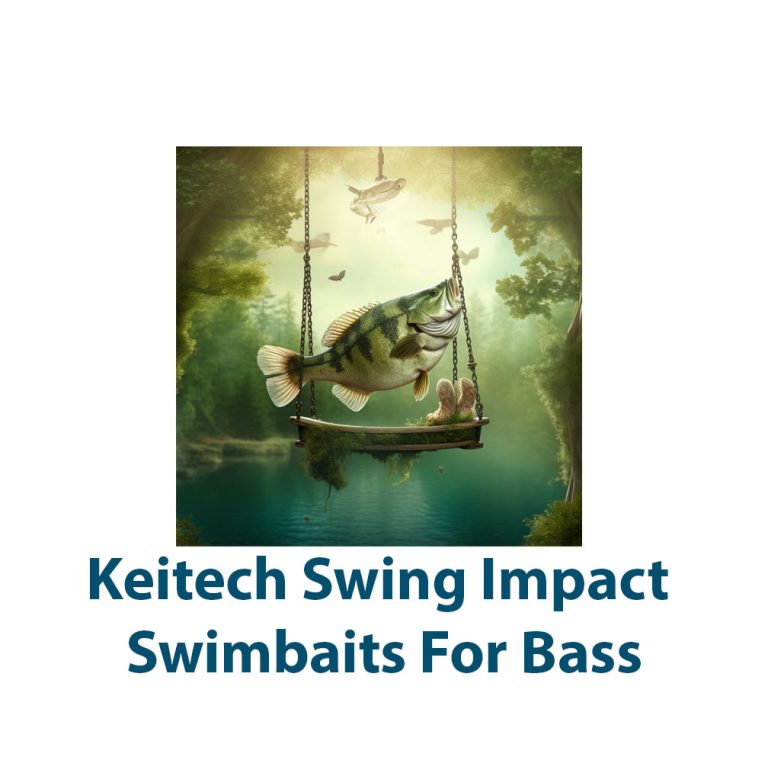
Keitech Swing Impact Swimbaits for Bass
Introduction Hey there anglers! If you’re in the market for some new swimbaits for bass fishing, I highly recommend checking out Keitech Swing Impact Swimbaits. They’re a favorite among many fishermen, including myself, and for good reason. In this article, we’ll dive into the science behind these lures, the different types available, techniques for using […]
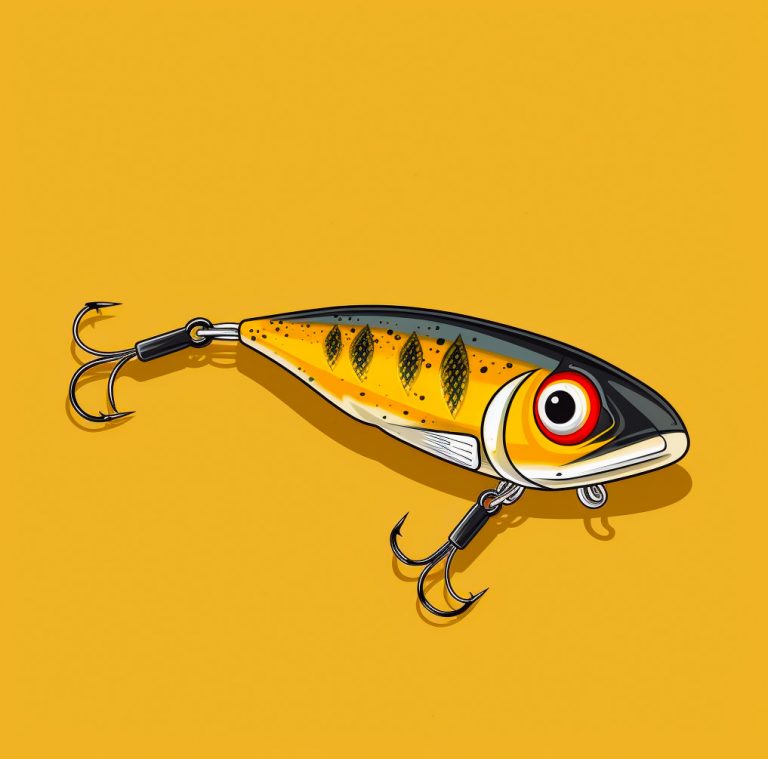
Jerkbaits in Every Season For Bass
Hey there, my fellow fishing enthusiasts! Are you tired of using the same old baits all year round? Well, today we’re going to talk about something that will spice up your fishing game – jerkbaits! And not just any jerkbaits, but jerkbaits that you can use in every season for bass fishing. I know, I […]
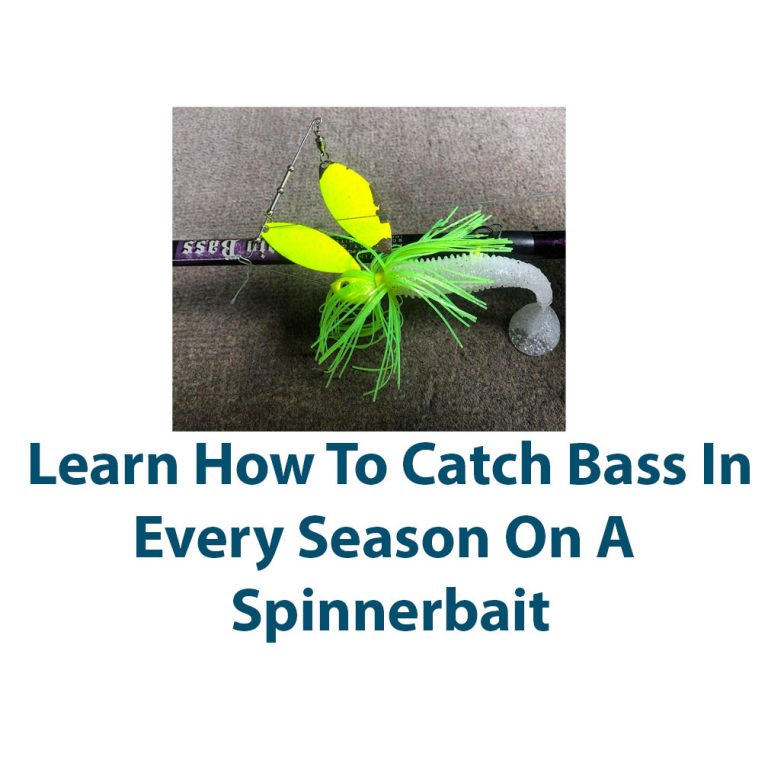
Catch Bass In All Seasons On A Spinnerbait
Introduction Hello and welcome to my tutorial on using spinnerbaits to capture bass throughout the year. I’ve spent countless hours as an avid angler honing my skills and discovering new strategies to capture more fish. Since I can remember, spinnerbaits have been a mainstay in my tackle box, and for good reason. They are adaptable […]

Fishing A Texas Rig For Bass: A Comprehensive Guide
“Why did the bass fisherman have trouble with a Texas rigged lure? Because he couldn’t handle the weight of the lone star state on his line!” Introduction This post will discuss bass fishing with a Texas rig. A common fishing method for catching bass is the Texas rig. Usually, a sliding bullet-shaped weight is threaded […]
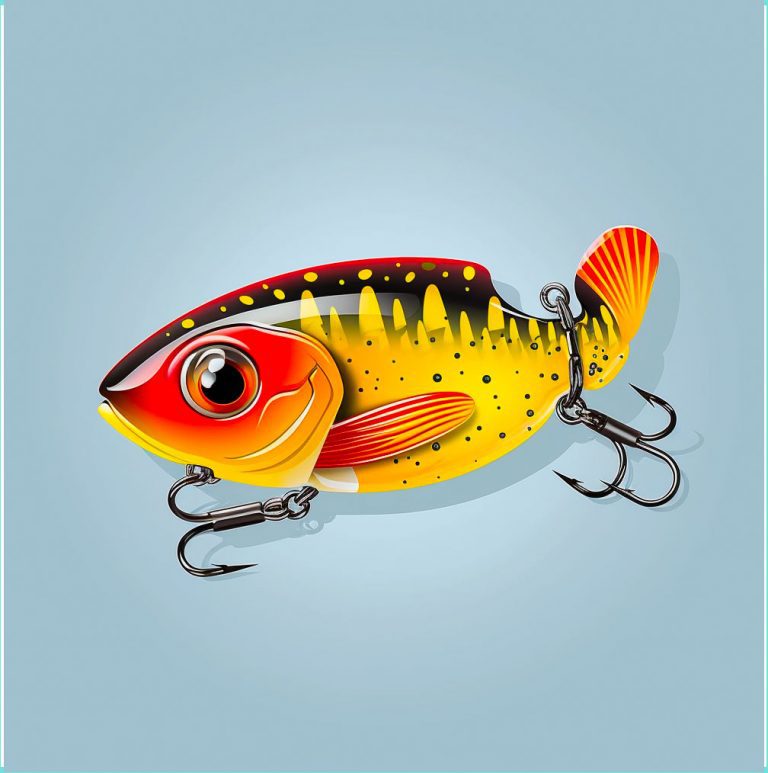
17 Lipless Crankbait Techniques To Load The Boat
Introduction: Lipless crankbaits are a popular type of fishing lure that is versatile and effective in catching a variety of fish species. This article will explore the top 17 lipless crankbait techniques, complete with explanations for each technique, tips for success, and when to use each technique to get the best results. Benefits of Using […]
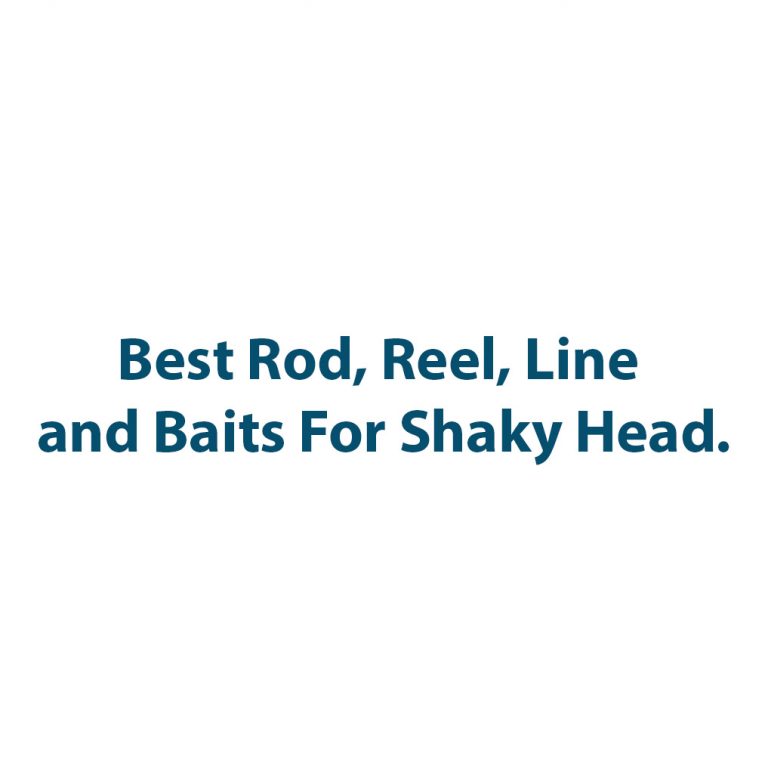
Best Rod, Reel, Line and Baits For Shaky Heads
Introduction Hey there, fellow fishing enthusiasts! Are you ready to dive into the exciting world of shaky head fishing for bass? Well, you’re in luck because today we’re going to explore the best rod, reel, line, and baits to use for this popular technique. Whether you’re a beginner or a seasoned angler, having the right […]

